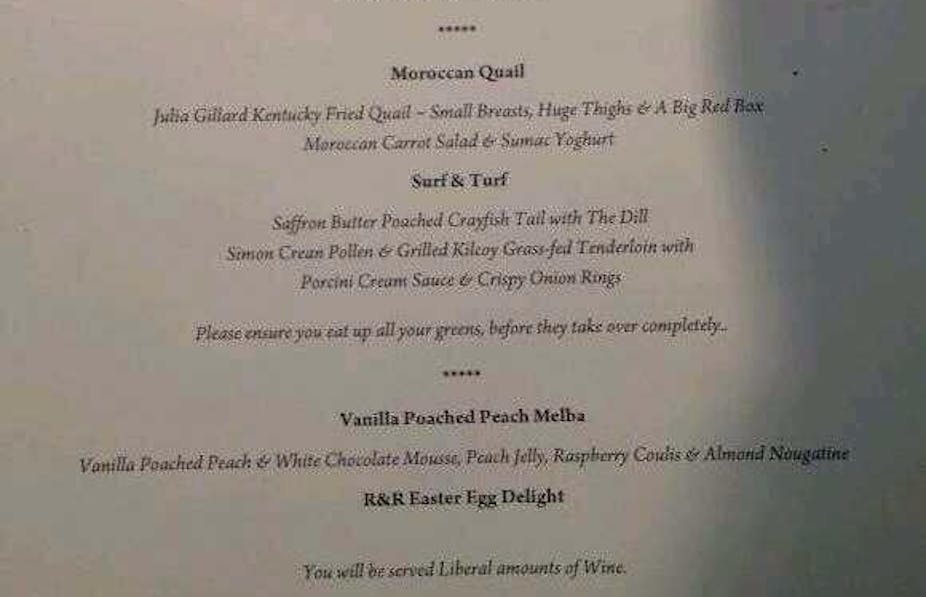In 2003, festooned on the sides of buildings and train stations and overpasses around Melbourne was a series of advertisements for Heaven ice creams.
Each billboard boasted variants of the very same image: a naked woman submerged in an ice cream, the chocolate-y dairy treat oh so careful to conceal her naughty bits.
This is hardly a complicated presentation: women, like ice cream, are invariably presented as consumable.
On a marketing level, the naked woman is used in an eye-candy way to draw attention to an advertised product. Aside from the rather-blah breast/lactation/dairy product link, female nudity and ice cream are unconnected. Unconnected, except for the very unsubtle idea that once the ice cream is devoured, left for gobbling is the woman.
The image makes perfect sense because our culture is more than well-versed in presenting women for chewing up and spitting out solely on the basis of their bodies.
In recent days, prime minister Julia Gillard - be it because of the sophomoric antics of those blue-tie bastards or because of the unfunny Manuel-from-Fawlty-Towers restaurant-hand tomfoolery – has been likened to a quail.
On the surface there is, of course, the cheap-and-tawdry, stock-standard sexism inherent in using a woman’s body parts to malign and insult. Alas, this is old news.
Equally old news is the likening of women to animals – to meat. Slurs directed at women – directed at the prime minister – invariably reference animals. Calling the prime minister – calling any woman – a bitch, a cow, a shrew – is about animals. It is about likening women to animals. It’s about implying that a woman is less than, it’s about downplaying her, devaluing her.
While one version of this argument could contend that in a ravenously carnivorous society like ours, likening women to meat is a crude way to reinforce the idea that women, like animals, are second class, are consumable, disposable.
A more palatable reading, however, is that women, like animals, are valued – and simultaneously both condemned and demonised – on the basis on their flesh, their parts. A much less controversial assertion and one effortlessly detected in our popular culture.
In the now infamous menu, it was Gillard’s thighs and breasts and genitals that were sectioned up and demonised.
This issue, of course, spotlights the differences in the ways men and women are treated in public life. Of course, there’s a case to be made that the media, that the public, are cruel to both men and women. Appearance-based attacks, however, are disproportionately directed at women. This transpires because our culture is long-primed to both attach greater value to a woman’s appearance than a man’s, and to use aesthetics exclusively as grounds to celebrate or condemn her.
Truth be told, I’m quite uncomfortable with “misogyny” being bandied about with inflammatory abandon. I’d even argue that the gender card is being played this week because the prime minister is desperate to carve out a brand differential between her Suddenly Sisterhood party and her apparently crusty conservative counterparts.
And yet the grading of women on the basis of the degree to which their parts meet our dubious standards of “quality” is a perfect illustration of everyday woman-hating that is effortlessly detected throughout our culture. “Menugate” is an apt example of this.
To a populus who by and large doesn’t want to believe sexism exists in Australia, it’s often challenging for feminists to argue a case for media misogyny when we’re surrounded by sexualised images of both men and women. Something making this task a little less onerous however, is asking whether we can imagine a man judged that way, spoken about that way, photographed that way.
Julia Gillard gets likened to a fried bird because apparently it’s perfectly okay to do this to women. Sure we mock and malign Tony Abbott, but he’s certainly not being chopped up and plonked on menu to be judged about his appearance. Because we don’t do that to men.
Need a good example of sexism? There’s one for ya.

